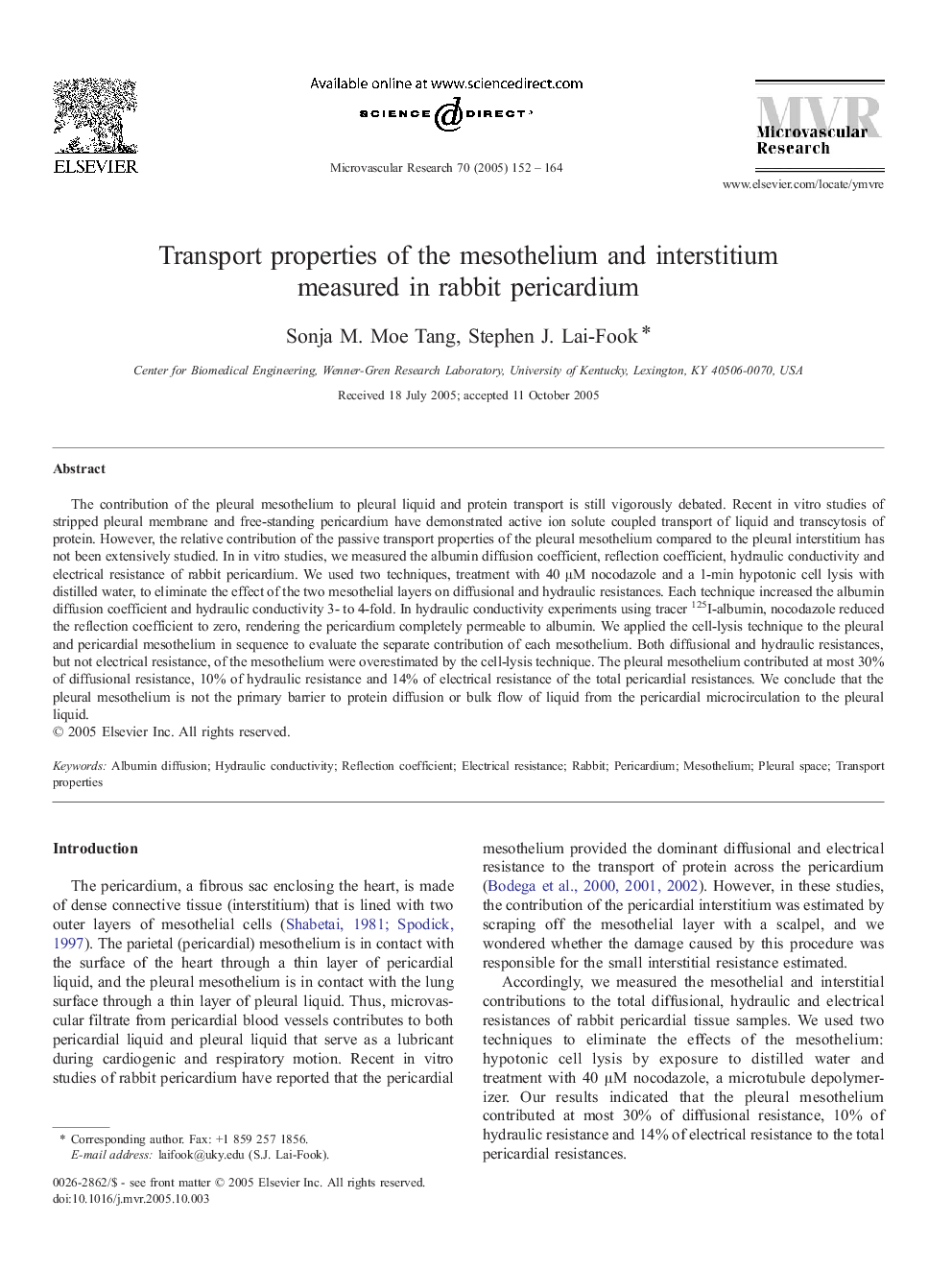| Article ID | Journal | Published Year | Pages | File Type |
|---|---|---|---|---|
| 9893103 | Microvascular Research | 2005 | 13 Pages |
Abstract
The contribution of the pleural mesothelium to pleural liquid and protein transport is still vigorously debated. Recent in vitro studies of stripped pleural membrane and free-standing pericardium have demonstrated active ion solute coupled transport of liquid and transcytosis of protein. However, the relative contribution of the passive transport properties of the pleural mesothelium compared to the pleural interstitium has not been extensively studied. In in vitro studies, we measured the albumin diffusion coefficient, reflection coefficient, hydraulic conductivity and electrical resistance of rabbit pericardium. We used two techniques, treatment with 40 μM nocodazole and a 1-min hypotonic cell lysis with distilled water, to eliminate the effect of the two mesothelial layers on diffusional and hydraulic resistances. Each technique increased the albumin diffusion coefficient and hydraulic conductivity 3- to 4-fold. In hydraulic conductivity experiments using tracer 125I-albumin, nocodazole reduced the reflection coefficient to zero, rendering the pericardium completely permeable to albumin. We applied the cell-lysis technique to the pleural and pericardial mesothelium in sequence to evaluate the separate contribution of each mesothelium. Both diffusional and hydraulic resistances, but not electrical resistance, of the mesothelium were overestimated by the cell-lysis technique. The pleural mesothelium contributed at most 30% of diffusional resistance, 10% of hydraulic resistance and 14% of electrical resistance of the total pericardial resistances. We conclude that the pleural mesothelium is not the primary barrier to protein diffusion or bulk flow of liquid from the pericardial microcirculation to the pleural liquid.
Keywords
Related Topics
Life Sciences
Biochemistry, Genetics and Molecular Biology
Biochemistry
Authors
Sonja M. Moe Tang, Stephen J. Lai-Fook,
